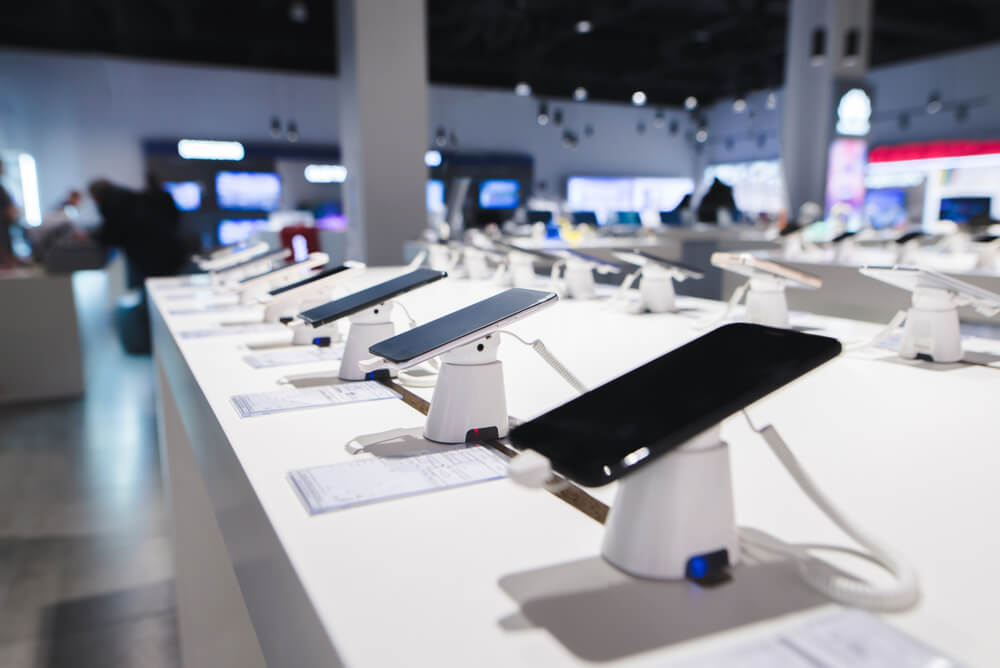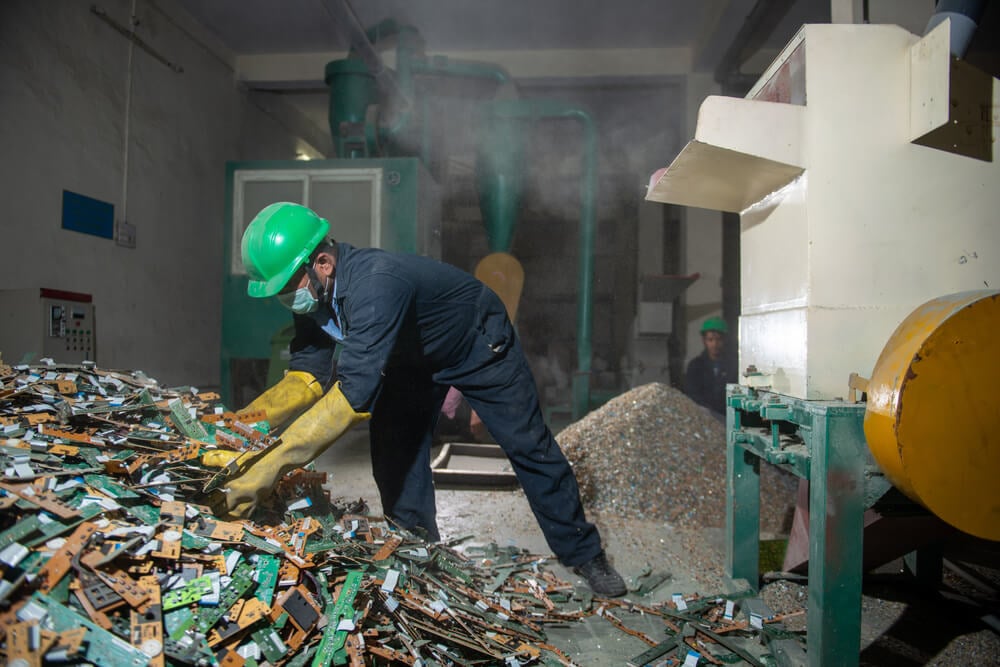Humanity generates mountains of electronic waste yearly, an invisible tsunami of discarded smartphones, laptops, TVs, batteries, and circuit boards.
By 2030, as per The Global E-waste Monitor, the world will produce over 82 million tonnes of e-waste, up from 62 million tonnes in 2022. But here’s the shocking part, only 22.3% of that waste was formally collected and recycled. The rest? Dumped, burned, or left to rot, leaking toxic chemicals into our soil, air, and water. Let that sink in.
This crisis is an environmental issue and a missed opportunity, a $91 billion one. That’s the estimated value of recoverable materials like gold, copper, and palladium that we’re letting slip through our fingers.
But 2025 is also a year of hope. Because quietly, persistently, and often under the radar, e-waste recycling technology is evolving. And it’s about time the world started paying attention.
The Wake-Up Call We Can’t Ignore
We've all seen firsthand how we celebrate innovation in AI, sustainability, and automation. Yet, e-waste rarely gets the spotlight. It's not glamorous or trendy, but it is urgent.
Especially when you realise the device you’re reading this on could one day become part of the problem. Yes, you can read that again.
Our insatiable demand for electronics, shorter product lifespans, and built-in obsolescence mean we’re generating e-waste faster than ever. In fact, e-waste is growing at five times the rate of formal recycling efforts, according to the Global E-waste Monitor 2024.
We can no longer afford to ignore this disconnect between consumption and responsibility.
The Rise of Smarter Recycling
Thankfully, technology is catching up. And 2025 is already proving to be a pivotal year. Companies now use AI-driven sorting systems that can recognise and precisely separate components.
Robotic arms can disassemble smartphones faster than any human could, while computer vision helps identify valuable metals and plastics for recovery. These innovations are turning what was once a manual, hazardous process into something safer, cleaner, and more scalable.
One example is using laser-induced breakdown spectroscopy (LIBS) to scan and sort e-waste materials rapidly. This tech can identify rare earth metals with machine learning algorithms in seconds.
Let’s not forget the emerging use of blockchain to track the life cycle of electronics, from production to disposal
Another breakthrough is hydrometallurgical recycling. A water-based technique that uses environmentally friendly solvents to extract metals without toxic chemicals.
And let’s not forget the emerging use of blockchain to track the life cycle of electronics, from production to disposal.
Recycling Equity - Bridging the Global Gap
But here’s the truth, innovation alone isn’t enough. E-waste recycling rates vary wildly depending on where you live.
Europe leads the way, with countries like Norway and Switzerland recycling over 50% of their e-waste.
Regions in Africa and South America recycle less than 2% of their waste
Meanwhile, regions in Africa and South America recycle less than 2% of their waste, often relying on informal workers who dismantle devices in unsafe, toxic conditions to make a living.
We cannot call this progress until everyone has access to safe, scalable recycling infrastructure. That means investment, policy, education, and international cooperation.
Imagine if tech giants partnered with governments in developing countries to build local recycling hubs. Imagine a world where consumers in every country knew exactly how to dispose of their electronics responsibly. That world is possible, but only if we act now.
From Consumers to Co-Creators. What is our role?
E-waste isn’t just a problem for governments and corporations to solve. It’s a deeply human issue. Every person who owns a phone, tablet, or laptop is part of the e-waste story. And the good news? We can all be part of the solution.
In 2025, more retailers are offering trade-in programmes, ecoATM kiosks, and right-to-repair options than ever before.
 In 2025, more retailers are offering trade-in programmes, ecoATM kiosks, and right-to-repair options than ever before
In 2025, more retailers are offering trade-in programmes, ecoATM kiosks, and right-to-repair options than ever before
The rise of circular economy models means you can now buy refurbished devices that work like new, at a lower cost and with a lower environmental impact.
But awareness is still the biggest barrier. Most people simply don’t know how to recycle their electronics or assume it’s too much effort.
That’s where education campaigns, digital literacy, and even gamification come in. Let’s make recycling as easy and engaging as upgrading your phone.
As a society, we need to shift our mindset from ownership to stewardship. From throwaway culture to circular thinking.
Why E-Waste Is a Gold Mine (Literally)?
Let’s talk about the upside, because there’s plenty of it. E-waste recycling lessens the need to extract raw materials, which is often energy-intensive, exploitative, and environmentally damaging.
One tonne of smartphones can yield more gold than a tonne of gold ore without tearing up the Earth.
Millions of green jobs might be created worldwide if e-waste recycling is formalised and scaled up
It also generates employment. The International Labour Organization says millions of green jobs might be created worldwide if e-waste recycling is formalised and scaled up. These positions include design, education, policy, logistics, and technology.
And perhaps most importantly, e-waste recycling is key to building the future's resilient, sustainable supply chains. As geopolitical tensions affect access to rare minerals, recovering them from our own discarded devices becomes a matter of strategic independence.
What’s Holding Us Back?
Of course, there are challenges. Oh, what would we do without challenges! Regulatory frameworks are often outdated or inconsistent across borders.
Many manufacturers still don’t design their products with end-of-life in mind. And the informal e-waste sector, while filling a critical gap, often operates under dangerous, unregulated conditions.
 The informal e-waste sector, while filling a critical gap, often operates under dangerous, unregulated conditions
The informal e-waste sector, while filling a critical gap, often operates under dangerous, unregulated conditions
There’s also the massive issue of data privacy. Many consumers hesitate to recycle electronics due to fears about accessing or misusing personal data. Secure data deletion protocols and public trust must be part of the solution.
But none of these challenges are hopeless. What’s needed is the will, political, corporate, and personal.
What will you do with your next old device?
E-waste may not be the most talked-about topic in tech, but it should be. Because behind every discarded device is a chance to do better.
We should innovate not just for profit but for the planet we live on. To create a future where our progress doesn’t come at the expense of our environment.
What will you do with your next old device? Toss it, or turn it into tomorrow’s treasure?
As I reflect on where we are in 2025 so far, I feel that the tools are here, the knowledge is growing, and the momentum is building.
But we all have a role to play, whether choosing sustainable products, demanding responsible recycling from brands, or simply spreading the word.
I end today with this question, what will you do with your next old device? Toss it, or turn it into tomorrow’s treasure? Because the future of e-waste isn’t just about what we throw away, it’s about what we choose to build from it.